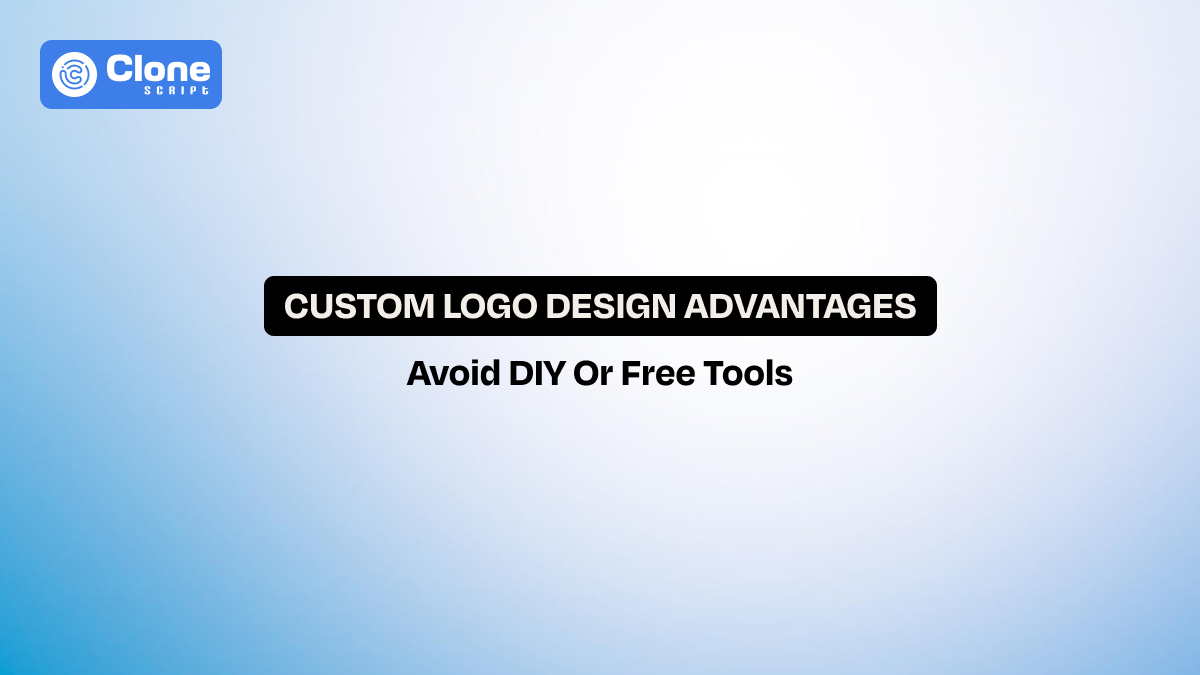How to Design a Crypto Exchange App That Traders Trust
According to Statista, more than 420 million people worldwide held digital assets in 2023. It means the global acceptance of cryptocurrency (a type of digital asset) is reaching new heights daily. The rise of blockchain technology has unlocked opportunities, and it has also created new challenges—especially in app design.
Developing a cryptocurrency exchange app isn’t just about creating something that looks modern. It’s about engineering trust. Traders rely on these apps to manage high-value assets in real time, and any friction in the app interface design can cost users money and loyalty.
In this guide, we’ll explore how to design a crypto exchange app that traders trust, understanding key features and best UI/UX practices, including security-first design principles.
What Is a Crypto Exchange App?
A crypto exchange app is a mobile or web-based platform that allows users to trade, buy, and sell cryptocurrencies. Unlike traditional finance apps, these platforms must handle extreme volatility, global trading across time zones, and asset security simultaneously.
Apps like Coinbase, Binance, and Kraken have become household names, but hundreds of new platforms compete for user attention every year. This makes cryptocurrency exchange app design a critical differentiator.
How Does the Crypto Exchange App Work?
At the base of a crypto exchange app are three integrated systems:
-
User Interface (UI): The visual layer that lets users check balances, monitor markets, and execute trades.
-
Backend Engine: The “matching engine” that pairs buy and sell orders at lightning speed.
-
Security Framework: Encryption, multi-factor authentication (MFA), and cold wallet integrations that safeguard funds.
Here’s the typical workflow in a cryptocurrency trading app:
-
A trader searches for Bitcoin in the app.
-
They place a buy order (market or limit).
-
The backend matches their order with a seller at the best available price.
-
Funds are instantly updated in both digital wallets.
-
The app’s interface displays updated balances and trade confirmations.
But in practice, things are more complex. For example:
-
Order Books: Traders want transparency in how their order is matched.
-
Liquidity Management: The app must display depth-of-market data so traders can make informed decisions.
-
Transaction Speed: Latency of even a few seconds can cause losses in a volatile market.
Designers need to consider how the crypto app user experience (UX) influences this flow. If trade confirmation screens are too cluttered or if price updates lag, trust is damaged. A user-friendly design keeps the process seamless, with clear status updates, instant notifications, and error prevention cues.
The Unexpected Rise Of Crypto Exchange App Platforms
The growth of crypto exchanges has been meteoric. In 2020, Coinbase had 35 million verified users. By 2023, this surged to over 110 million users globally. Binance alone handles $65+ billion in daily trading volume.
The global cryptocurrency adoption index by Chainalysis showed a 880% increase in adoption between 2020 and 2022. As users flood in, exchange apps are becoming important.
For designers, this creates both opportunity and responsibility: build a secure crypto exchange app UI design that can scale with millions of users while still feeling intuitive.
Why Design Matters in Crypto Exchange Apps?
When it comes to money, design equals trust. A poorly designed crypto trading app can instantly feel unsafe to traders, who are already cautious about scams and hacks.
According to Forbes (2022), 20% of users avoid trading apps due to a lack of trust in their usability and security. Good design reduces frustration, lowers abandonment rates, and encourages long-term loyalty.
Investing in professional app UI/UX design is not just about beauty—it’s about credibility.
7 Key Features of a Trusted Crypto Exchange App
The challenge of balancing simplicity for beginners with powerful tools for advanced users can be solved with the best features available in the exchange app. Let’s understand the must-have features:
-
Easy Onboarding
Traders often drop out during complex sign-up flows. A streamlined KYC (Know Your Customer) process with clear progress indicators reassures users that the app is professional and compliant. Adding visual cues and micro-interactions makes onboarding less intimidating.
-
Real-Time Market Data
Cryptocurrency markets are volatile—prices can swing by 5–10% in minutes. Showing accurate, real-time data (candlestick charts, depth charts, and order books) builds credibility. Designers should ensure data-heavy screens remain fast, responsive, and uncluttered.
-
Clear Trading Dashboard
A well-organized dashboard prevents costly mistakes. Traders need easy access to buy/sell buttons, order history, and portfolio balances. The app UX should minimize steps for placing trades while highlighting confirmation dialogs to avoid errors.
-
Multi-Currency Support
Today’s traders rarely stick to one token. A trusted app supports BTC, ETH, stablecoins, and famous memecoins, along with altcoins. From a design standpoint, this means creating intuitive wallet management screens with color coding, icons, and filters for clarity.
-
Advanced Security
Security is non-negotiable in crypto trading. Features like biometric login, two-factor authentication (2FA), and withdrawal whitelists should be integrated seamlessly into the UI. Displaying security settings prominently confirms to users that their funds are safe.
-
Alerts & Notifications
Traders rely on instant updates for price movements or completed trades. Push notifications, in-app alerts, and sound/vibration cues should be customizable so users can decide what matters most. Poorly timed or excessive alerts can frustrate users, so balance is key.
-
Accessible Support
When handling money, trust breaks if users feel abandoned. Built-in chatbots, help centers, or FAQs give users instant reassurance. Designers should ensure support is reachable within two taps—not buried in menus. A visible “Help” button increases trust.
Why These Features Matter for Designers?
Here are the common reasons that represent the features useful for overall app success:
-
Functionality + Simplicity: Traders expect advanced features without cognitive overload.
-
Error Prevention: Good cryptocurrency app UI design reduces mistakes like mis-typed amounts or wrong withdrawals.
-
User Confidence: Visible design elements like progress bars, confirmations, and notifications give users confidence that their trades are secure.
-
Retention & Loyalty: Apps that combine security with usability see higher retention and word-of-mouth referrals.
In short, these features form the foundation of a user-friendly crypto trading app design. Without them, even the sleekest app won’t gain long-term trust.
8 Best UI/UX Design Practices for Crypto Apps
A clunky or confusing design can push users away, while a thoughtful crypto app UX keeps them engaged and loyal. Here are some best practices to guide you:
1. Keep It Simple
Traders don’t want to fight through cluttered dashboards. Focus on the essentials—buy, sell, portfolio balance. A clean, minimalist design makes the app less intimidating, especially for first-time users. By following dashboard UI/UX design principles, you can make the app inclusive.
2. Dark Mode First
Most traders spend hours watching charts, and bright screens can feel harsh. That’s why dark mode has become the standard. Offering it by default shows you understand your users’ habits.
3. Make Numbers Easy to Read
Big, bold fonts for balances and clear color coding (green for gains, red for losses) help traders make faster decisions. In volatile markets, readability is everything.
4. Give Power to the User
Not everyone trades the same way. Allowing advanced traders to customize dashboards—like rearranging charts or setting price alerts—makes your app more versatile.
5. Balance Speed with Safety
Fast execution is important in cryptocurrency transactions, but a single mistake can be costly. One-click trading should always be paired with confirmation prompts for big orders. This keeps speed without sacrificing security.
6. Keep Navigation Frictionless
Think about the flow: deposit, withdraw, trade. If these take more than a couple of taps, users will get frustrated. Smooth navigation makes your app feel effortless.
7. Add Small Touches of Reassurance
Little things like animations when a trade goes through or a clear message when something fails help users feel in control. These micro-interactions build trust.
8. Design for Visible Security
Security isn’t just backend encryption—it’s a UI/UX feature. Traders need to see safety in action. This means:
-
Biometric authentication (Face ID, fingerprint login) for peace of mind.
-
Two-factor authentication (2FA) is integrated seamlessly during onboarding.
-
Withdrawal whitelists so users can pre-approve wallets.
-
Session timeout notifications to prevent unauthorized use.
-
Compliance badges (KYC, AML, ISO) are displayed transparently to show legitimacy.
The takeaway? The best UI/UX practices for crypto apps put traders first. By combining simplicity, customization, speed, and visible security features, you don’t just create a trading app—you create an app that feels safe, trustworthy, and built to last.
5 Crypto Exchange App Design Trends
For designers, staying ahead of trends isn’t about chasing fads—it’s about understanding how traders’ habits are changing and how design can adapt to support them. Here are some trends shaping cryptocurrency trading app design today:
1. Gamification for Engagement
Trading can feel stressful, but adding reward systems, streak trackers, or achievement badges can make the experience more engaging. Think of it as motivation for users to stay active without distracting them from serious trading.
2. Micro-Animations for Clarity
Tiny animations—like a smooth transition when a chart updates or a subtle checkmark after an order goes through—add polish and help reassure users that the app is responsive. These micro-details reduce anxiety in high-pressure trading.
3. Voice-Powered Commands
With mobile-first usage on the rise, some apps are experimenting with voice input for trading actions. It’s still early, but the potential for accessibility and convenience is huge.
4. Personalized Dashboards
AI-driven personalization is finding its way into crypto apps. By tailoring dashboards based on a user’s trading habits, apps can serve up the most relevant data and tools without overwhelming them.
5. Web3 & DeFi Integration
More users now want seamless access to NFTs, staking, and decentralized finance (DeFi) features alongside traditional trading. Designing smooth wallet connect experiences is becoming a must for forward-looking apps.
In short: The future of crypto app UX is about personalization, seamless integration, and small design touches that build confidence. By staying on top of these trends, designers can create apps that feel both modern and trustworthy.
How Professional UI Design Helps You?
For crypto exchange platforms, where people trade assets worth thousands (sometimes millions), professional UI/UX design can make the difference between success and abandonment.
You can use a ready-made Figma UI kit as mentioned below:
This app interface design helps you in the following:
1. Faster Onboarding Means Higher Adoption
First impressions count. A polished sign-up and KYC flow makes users feel confident from the start. If onboarding feels clunky, users often quit before they even make their first deposit.
2. Increased Trading Activity
A well-structured crypto app UX makes it easier for traders to place orders quickly and monitor performance. The smoother the experience, the more likely users are to keep trading—and that directly impacts revenue.
3. Reduced Drop-Offs and Abandonment
Confusing navigation or unclear error messages frustrate users. Professional UI anticipates these friction points and designs around them, keeping users from uninstalling your app in frustration.
4. Building Brand Loyalty
Traders don’t just want functionality; they want to feel safe. A clean, trustworthy design creates an emotional connection. When users believe your app is reliable, they recommend it to others, driving organic growth.
5. Competitive Advantage
The market is crowded. Thousands of cryptocurrency trading apps compete for attention, but few offer a seamless, professional experience. Strong design is one of the fastest ways to stand out.
Bottom line: Professional exchange app UI/UX design isn’t a nice-to-have—it’s a growth strategy. The better the experience you create for traders, the more they’ll trust your platform, use it frequently, and bring others along.
Conclusion
Crypto exchange app design is not just copying the successful apps that have millions of users. But consider them and find what problem they solved. Follow the best UI and UX design practices mentioned above, with trends to keep the app advanced as it should be. Remember: in crypto, trust is the real currency—and your design choices are what earn it.
FAQs
-
How can users verify a crypto exchange’s compliance?
By checking licenses, audits, and proof-of-reserves, they can understand the legitimacy of the platform. Designers should highlight these credentials visibly to reinforce user trust.
-
What security features do users expect in crypto apps?
Biometrics, 2FA, cold storage, and withdrawal whitelists are considered the proper features for a crypto app’s security. Good design makes them visible, simple to enable, and unobtrusive during trading.
-
What are common red flags in crypto exchange apps?
The issues with the exchange app for cryptocurrency include hidden fees, fake volumes, frozen withdrawals, and poor support. Transparent design builds trust by clearly showing fees, histories, and policies.
-
How many cryptocurrencies should an exchange support?
Users expect popular coins, stablecoins, and new tokens. Designers must balance token variety with clear navigation, filters, and search functionality.
-
How important are charts and analytics to traders?
Very important. Users rely on clear, customizable charts and data. It’s better to prioritize readability, real-time updates, and optional advanced tools.
-
Is app UI design helping in frontend development?
Yes, UI design directly supports frontend app development by providing the layouts, structure, and user flows that developers code into a working app. While development can start without final designs, it’s much faster, cleaner, and more user-centered with professional UI design in place.
 BTC - Bitcoin
BTC - Bitcoin
 USDTERC20 - USDT ERC20
USDTERC20 - USDT ERC20
 ETH - Ethereum
ETH - Ethereum
 BNB - Binance
BNB - Binance
 BCH - Bitcoin Cash
BCH - Bitcoin Cash
 DOGE - Dogecoin
DOGE - Dogecoin
 TRX - TRON
TRX - TRON
 USDTTRC20 - USD TRC20
USDTTRC20 - USD TRC20
 LTC - LiteCoin
LTC - LiteCoin







